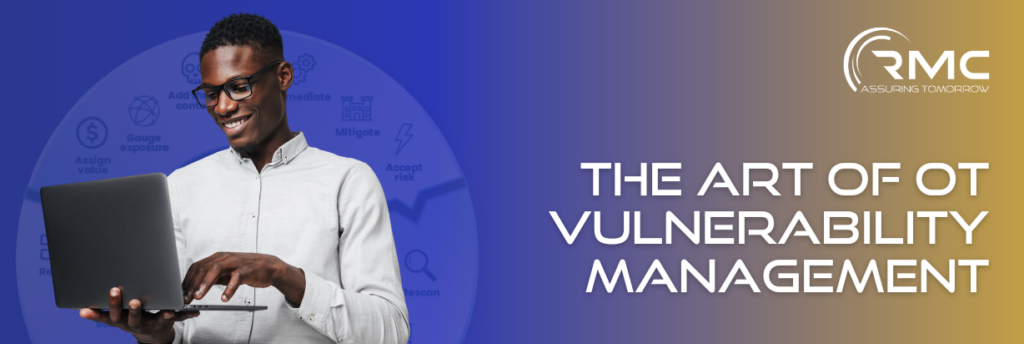Vince Kuchar, CEO of RMC Global, & Brad Bekampis, Senior Cybersecurity Specialist
Managing vulnerabilities in Operational Technology (OT) is a complex, yet critical task.
OT systems form the backbone of many industries in which automation and control of physical processes are crucial, representing a unique intersection of technology and practical operation. This blog aims to unravel the complexities of OT vulnerability management, incorporating insights from RMC industry experts and leading practices.
The Inherent Challenges of OT Systems
To properly address the vulnerabilities within OT systems, it’s crucial to understand that attackers often find it easier to exploit existing features rather than create or identify new vulnerabilities. This core issue in OT environments stems from features implemented on devices that typically utilize outdated technologies, introducing inherent risks.
The management of vulnerabilities in OT systems thus requires a nuanced strategy, one that not only identifies these inherent risks but also prioritizes impacts to critical operations. This strategic approach must consider the unique characteristics and operational necessities of OT systems, which are markedly different from those in traditional IT environments.
OT systems are integral to industrial processes but are often designed with security as a secondary concern. This is further exacerbated by vendor-specific limitations and the reliance on outdated security protocols. For example, leading vendors and Original Equipment Manufacturers (OEMs) conduct extensive testing before releasing approved version updates for deployment. As such, the rollout and integration of advanced security controls often lags that of IT vendors, reflecting a broader trend within OT systems.
Highly dependent on vendor schedules and approval processes for critical updates, OT environments find themselves in a challenging position. Organizations are thus faced with the delicate yet critical task of balancing the need for operational continuity with the imperative to enhance security. It underscores the importance of adopting a strategic and thoughtful approach to OT vulnerability management, one that is informed by an understanding of both the technological and operational elements of these systems.
Strategic Prioritization in OT Vulnerability Management
A strategic approach is essential to managing OT vulnerabilities: one that not only acknowledges the unique aspects of OT environments but also the variability within each setting. It’s important to recognize that even within the same industry or function, individual OT environments can differ significantly. This variability necessitates a deep dive into understanding the specific operational processes of each site, moving beyond just identifying and remediating technical vulnerabilities to an approach in which vulnerabilities are considered within the operational context.
The prioritization of vulnerabilities in OT also calls for a reevaluation of traditional risk assessment methods. Systems like the Common Vulnerability Scoring System (CVSS) might not capture the full scope of risks unique to OT systems. The specific context and operational importance of these systems demand a more nuanced risk assessment approach that weighs not only the severity of a vulnerability but also its potential impact on the continuity and safety of operations.
Moreover, while automation plays a crucial role in OT vulnerability management, it must be complemented by human oversight. The distinct characteristics of OT systems, especially those with vendor-specific configurations, necessitate vigilant, proactive management and an adaptive approach.
Given the inherent ‘insecure by design’ nature of most OT environments, system owners often face the challenge of implementing additional security measures to fortify these systems. This task requires a blend of technical knowledge, operational acumen, and a keen sense of business objectives, understanding the complex interplay between vendor dependencies, operational needs, and evolving cybersecurity threats.
Successfully navigating this landscape involves maintaining a delicate balance between operational efficiency and security enhancement. Financial constraints further complicate this balance, as sites with limited budgets may need to choose between expensive security upgrades and production enhancements. Depending on business objectives and an organization’s security culture, short-term business revenue is often prioritized over longer-term security gains.
Prioritizing Effectively with Limited Budgets
Effectively prioritizing vulnerabilities becomes even more complex considering the budgetary constraints typical in OT settings. Site managers are often caught in a dilemma: allocating funds toward cybersecurity improvements or investing in system upgrades and workforce enhancements. This decision is influenced by a myriad of factors, including operational necessities, corporate directives, and sometimes, political considerations. Feedback from site managers often follows a common trend – the scarcity of resources (both financial and human) often leads to a compromise, where security enhancements are weighed against potential increases in production capacity.
To navigate these challenges effectively, RMC recommends focusing on key areas that maximize security impact within these constraints:
- Network Segmentation: To limit the spread of malware or ransomware to OT networks and to limit the attack surface of critical process control devices.
- Controlled Remote Access: Sites should maintain control of remote access sessions and only grant access to contractors, integrators, or vendors using secure protocols when necessary (for maintenance, etc.).
- Stringent Identity and Access Management (IAM): Access should be reviewed consistently to ensure that operators, engineers, vendors, etc., have the minimum level of access and permissions required to do their job. Excessive or unnecessary access can lead to lateral movement or unauthorized changes. Attackers often abuse the privileges of the accounts they compromise.
- Regular Patch Management: Patch management plans should be coordinated with vendors and be implemented on a regular basis that aligns with vendor-approved deployments.
- System Hardening: Removing non-essential services or protocols and testing for common misconfigurations that can lead to vulnerabilities such as privilege escalation.
- Robust Backup Strategies: Developing and implementing a regular backup schedule is essential for resilience, especially against ransomware threats.
- Enhanced Network Visibility: Integrate real-time monitoring services to help detect and respond to unauthorized changes or attacks against OT environments.
Striking the right balance in OT vulnerability management demands a holistic approach, one that accounts for both operational imperatives and strategic security objectives. It’s about making informed decisions that resonate with the specific operational goals and constraints unique to each environment. At RMC, our goal is to bring our specialized expertise to these challenges, helping site managers find the ideal balance between productivity and security.
Another pivotal aspect of this approach is rethinking the reliance on Common Vulnerabilities and Exposures (CVEs) as the primary indicator of system security. It’s a common misconception in the OT security field that the absence of CVEs signifies a secure system. However, the reality is that many OT devices, by their very design, harbor inherent insecurities not necessarily captured by CVE listings. This insight shifts the focus toward a more comprehensive view of security, recognizing that a lack of CVEs does not equate to an absence of vulnerabilities.
This broader perspective on security forms the foundation of our approach at RMC. We advocate for a security assessment that goes beyond the conventional CVE-centric view, encouraging a deeper evaluation of the system’s overall security posture within each unique operational context. Our aim is to equip organizations with the knowledge and tools to navigate these complexities, ensuring a robust OT environment through strategic prioritization and effective resource management.
How can RMC help your organization?
Contact us today: [email protected]
Be sure to follow RMC Global on LinkedIn, and bookmark our News & Perspectives website to stay apprised of industry insights and topical advice on establishing cyber resiliency in OT environments.

